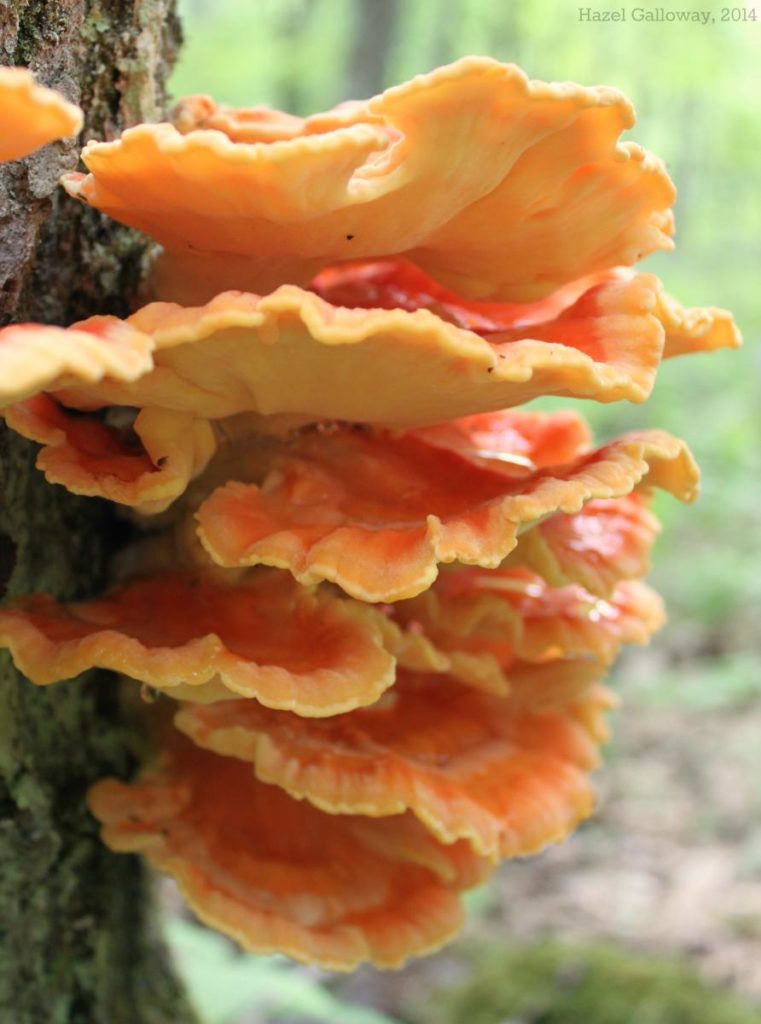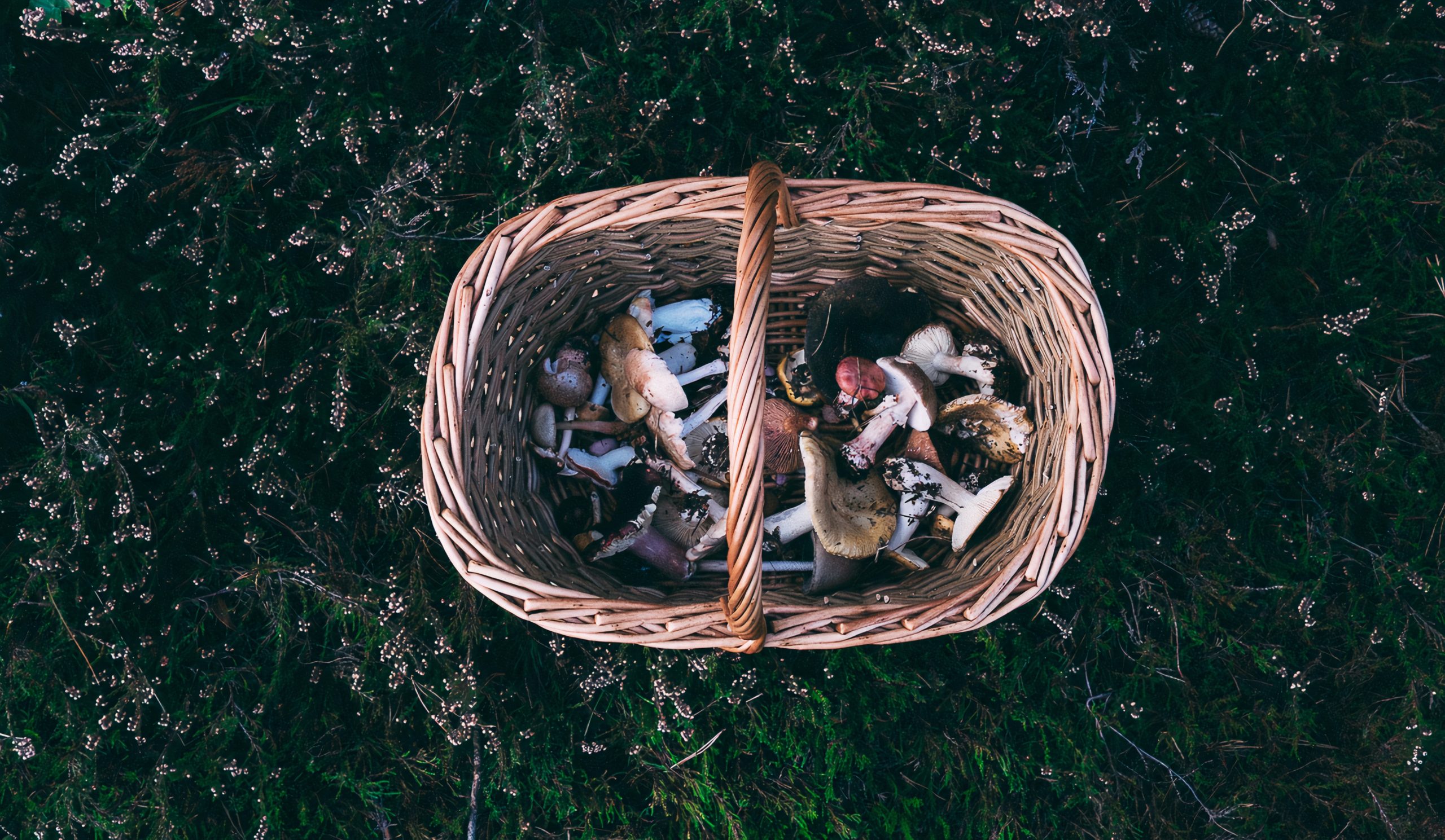The Urban Appalachian Community Coalition explores Appalachian foodways because these sustain us and sustain the culture of Appalachian people. When we think of Appalachian cuisine and Appalachian foodways, we may think of the obvious things like soup beans and shuck beans—things that persist for many folks to this day. But one of the signature features of Appalachian foodways has more to do with what was around them and less to do with anything we might call “cuisine.” Foraged foods were central to the life of people in the mountains, and the practice of food foraging continued after people made their way to cities. In fact, there is renewed interest in food foraging
Mark Sohn, author of Appalachian Home Cooking: History, Culture, Recipes, tells us that the topography of the Appalachian region determined in many ways the kinds of foods that became part of Appalachian foodways. “Pawpaws, squirrel, pike, morel mushrooms (called dry land fish by many), black walnuts, corn, beans and wild greens were common,” he explains. These were foods indigenous to parts of the Appalachian region. Learning from Native Americans, the people of Appalachia came to use these foraged foods as central features of diet and culture.
Indeed, survival could depend on a knowledge of natural food sources that abound in the Appalachian region. Appalachians developed the skills and knowledge necessary to safely forage for food through the basic need to live. With time, and some help from indigenous people, foraging for food in Appalachia became part of the culture. People still head into the woods to search out wild mushrooms, edible greens, and medicinal plants.
It is currently pawpaw season in our area. Ohio’s native fruit can be found in the woods all over the region. Pawpaws are delicious fresh off the tree. They have a thick flesh that almost has the consistency of pudding. I find them mostly by accident simply by waling the trails all over greater Cincinnati. (There are a ton of pawpaws in Shawnee State Forest just west of Cincinnati). Pawpaws are something of a signature food in much of Appalachia. Albany, Ohio hosts a Pawpaw Festival every year that features the foraged fruit in every permutation possible, both delicious and questionable. The real trick with pawpaws is finding them a just the right stage. They are ripe for a brief time and are not all that tasty when picked too early or late. Most folks say to get them when they are falling off the tree.
Foraging food in Appalachia owes much to the indigenous people of the region. Many of the foraged foods that have become central to Appalachian foodways were introduced to early settlers by indigenous people who had been using these foraged items as food and medicine for centuries. One notable example is sochan leaves (also called the green-headed coneflower) which have similar properties as echinacea. In the course of researching this article I discovered the work of Rebecca Beyer who calls herself an “Appalachian witch forager.” Beyer combines her academic background in plant and soil science with her Master’s Degree in Appalachian Studies to teach course on the ethnobiology of the Appalachian region. The use of the sochan leaves as folk medicine has its origin in the practices of the Cherokee people who passed this knowledge onto those who moved to the Appalachian region. People still forage for sochan to this day for the same purposes.
Mushrooms grow all over the Appalachian region, and a recent article in Appalachian Voices explained that “scientists estimate that only 2,300 of as many as 20,000 species have been identified there.” Of the vast number species of fungi native to the Appalachian region, a few have become staples of Appalachian foodways. Morels, Chicken of the woods, hen of the woods, and chanterelles are plentiful, delicious and fairly easy to find.

My resource for food foraging is a good friend named Rom Wells. Rom and I met at Miami University. In addition to sharing a love of books that nobody reads, Rom is a serious food forager. I go to him with questions about mushrooms in particular. I won’t forage mushrooms on my own because, as I was once told: all mushrooms are edible, but some are only edible once. That is why I call on Rom Wells. Rom and his daughter have been mushroom hunting in Laboiteaux Woods in College Hill: “We’ve been finding chicken of the woods all over, and there have been plenty of chanterelles this year.” He continued: “My daughter has become better at this than I. I started asking her about things when I’m not sure.”
Rom is from Middletown. As he explained, “my family is part of the typical urban Appalachian experience—people from Appalachia who came here to work in the steel plants. I don’t even know where they are from.” He grew up with an uncle who took him mushroom hunting, but he did not get serious about it until about five years ago. Since taking up mushroom hunting, he has branched out into food foraging in general. “I made a pawpaw hot sauce a couple years ago. Some people liked it, some didn’t.” Rom said the pawpaw hot sauce smelled pretty bad, but he also pointed out that if you can eat blue cheese, you ought to be able to handle some pawpaw hot sauce.
Food foraging is a central feature of Appalachian foodways and the Appalachian history and culture. Certainly, agriculture sustains communities and families, but making use of what nature offers all around us is just as crucial as corn and beans. From wild greens to pawpaw pudding, foraged food is part of the cultural heritage of urban Appalachians, and many of us are still foraging the woods around greater Cincinnati. For urban Appalachians, and for anyone else with an interest, the woods surrounding greater Cincinnati are filled with natural gifts.
Sites referred to in this article:
https://www.smliv.com/food/appalachian-foods-defining-generations/
Mike Templeton is a writer, independent scholar, barista, cook, guitar player, and accidental jack-of-all-trades. Check out his profile in UACC’s new Cultural Directory. He lives in downtown Cincinnati with his wife who is a talented photographer. They spend their free time walking around the city snapping photos. She looks up at that the grandeur of the city, while Mike always seems to be staring at the ground.


Born Appalachia, I’ve enjoyed reading this very informative article! Thank you for sharing.